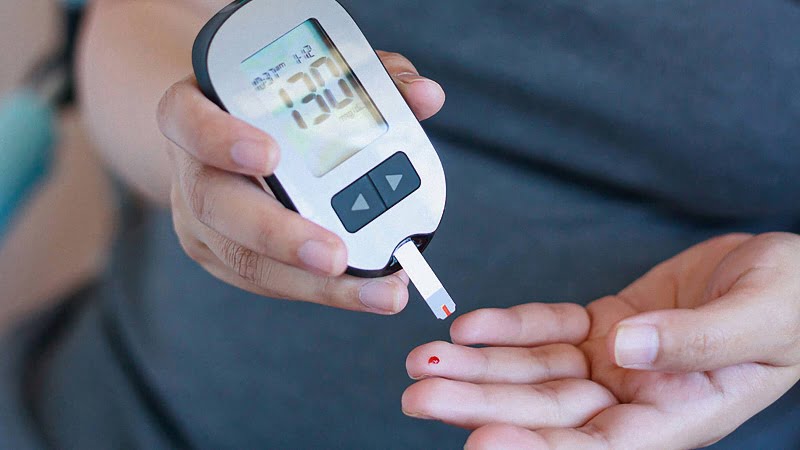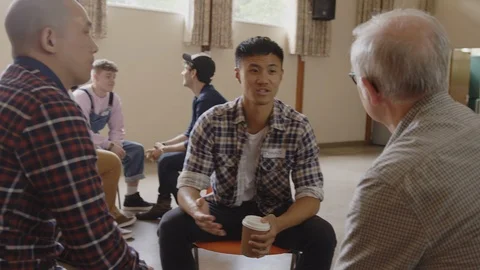
Skin. It is the human body’s largest organ, and it is our greatest barrier against external harm and disease. It stands to reason that we should take good care of it. However, with eczema and outbursts, irritation and sunburns, dryness and chapping, our skin can often provide us with discomfort or make us feel insecure. This is where skincare products normally enter our lives.
As one of the oldest, and today the largest sector in the cosmetics industry, skincare has become an integral part of most of our day-to-day routines. The conundrum has become one of choice; thousands of items promise hope of skin that is photoshop-pristine, ever-youthful, soft, healthy, and well-balanced. Currently, rising consumer awareness and the increasing availability of organic and plant-based products have driven the market towards more sustainable and high-quality items. Consumers have become more alert as to the harmful ingredients that are still often found in personal care and cosmetic products: ingredients like carcinogens and endocrine disruptors. At the same time, the burgeoning world of natural health exposes us to products that make unsubstantiated claims, and which are often not as thoroughly regulated and tested as they should be.
Whether you are new to Goodbody and this is the first of our articles that you’ve come across, or you’re already familiar with our philosophy of stringent lab testing and zero-compromise CBD products, we know that you care about the health of your body and your skin. In this article, we are not only going to get stuck into what CBD is, how scientists think it works, and the potential relations between CBD products and skin health. We’re also going to delve deeper into the complex ecosystem that our skin is proving to be, and the changing nature of skincare. After all, to understand the whys and wherefores of applying CBD topically, we believe it’s crucial to try to understand human skin and how self-care and skincare have evolved over time.
Before we dive in, a quick disclaimer: we do not think it’s our place, or, as a matter of fact, any company’s place, to make any promises as to the therapeutic and medicinal effects of CBD. The science and the market behind this fascinating compound are still relatively green (forgive the pun!). We believe that CBD has a great future, but what we really care about is that you make up your own mind–consulting a professional is a good first step–about what works for your individual circumstances, and what does not. Sounds pretty straightforward, right? Well then, let us get right down to it.
The Long and Winding Road to Skincare
The history of skincare is a complex and fascinating subject. We may never know how the original soap came about–probably a Palaeolithic ‘caveman’ who once spilt animal fat in the fire ashes, and observed the cleaning effects of the resulting foam. What we do know is that some of the greatest ancient civilisations were partial to cleansing products and cosmetics–from Ancient Egyptians with eye-liner and baths of essential oils, to Greeks with their copious use of face powders and Etruscans with their salves. These products share many characteristics with present-day cosmetics; although several ingredients were used that were later shown to be toxic–such as lead in Egyptian kohl, and red mercuric sulphide in Greek blush. Other ingredients, however, like beeswax and olive oil, were as natural as it gets, and are still staples in the wellness industry today. Finally, the ancient world sought exotic and odd-sounding recipes for instant beauty, from using snail ash to lizard excrement-based creams. Although ingredients today aren’t quite that extreme, the search for new and exciting additives is still very much relevant. However, although some ancient civilisations showed extensive interest in cosmetics and grooming, we can’t ignore that for thousands of years, cleansing in general, as well as skincare, was far from the popular norm. In fact, a closer look at Western history shows a not-so-clean past.
The truth is, for a long time, washing was most definitely not common–especially in the West. Several documents back this up. One is the journal of the 10th-century writer Ahmad ibn Fadlan, who was left appalled by the lack of personal hygiene he observed in the people he met whilst travelling from Baghdad to the Volga river. The Middle Ages generally get a very bad reputation in terms of hygiene, though we should not judge them too harshly as running water was rare. Aromatic herbs such as lavender and basil were commonly used to ward off vermin and lice in straw bedding; lime and salt often served as a sort of lather. Concerns over personal ‘skincare,’ however, would have certainly sounded alien to all but the most pampered of nobles.
Commercially sold skin cleaning products only really emerged in the nineteenth century. This change is linked to the industrial production of meat, which led to the increased production of leftover fats that had no use and were being discarded. These fats would eventually be repurposed into soap, and a range of advertising strategies were employed to try to create a demand for this new cleaning product.

Skin: an Ecosystem in Motion
Curiously, there is a man by the name of Dr Hamblin that has become famous as the ‘soap dodger,’ a doctor who has not showered in five years (he washes his hands, and occasionally rinses). The motivation behind this puzzling decision actually comes from Hamblin’s reading of emerging skin and microbiome science. These bodies of research suggest that the skin is not simply a barrier that we should keep sterilised, or a wall our body has erected against the outside world, which requires constant cream-based attention. That is not to say that our skin does not have a key protective function: it does. However, these bodies of research have now established that there is a whole microbiome of skin microorganisms that live on our skin. These skin microorganisms, including small facial mites, have adapted to utilising our skin’s nutrients and regularly breed, feed, and yes, even die on our face. As strange as this may initially sound, these communities of skin microorganisms have been found to help the cutaneous immune system run smoothly, as well as help get rid of dead cells. In this way, these microorganisms are our skin’s natural exfoliators. Moreover, certain skin diseases have also been correlated with changes in our native microbial state, leading scientists to hypothesise that targeting the skin microbiome could have potential as a therapeutic treatment against some skin disorders. That takes us back to our ‘soap dodger’ Dr Hamblin, as many cleansing products actually end up washing away our skin’s naturally produced oils, as well as disrupting the microorganisms on our skin.
The bottom line is, skin bacteria have always been living in and on us. We have grown rather accustomed to thinking of the ‘healthy bacteria’ in our gut—it is perhaps time we thought along similar lines about our skin. Doing so–thinking of our largest vital organ as a dynamic ecosystem–can help us find a balance between its endogenous processes and those affecting our everyday life, such as stress, pollutants in the air, food, and so on.

To Apply or Not to Apply?
Applying these principles in practice can be rather challenging. This is not only because many of us have grown accustomed to relying on beauty products and procedures to resolve our skin issues. As the world braces itself for resurging pockets of coronavirus (COVID-19) infections, and social distancing becomes the new normal, advice such as Hamblin’s for keeping a healthy microbial skin balance may sound dangerous. In our present circumstances, the very idea of “reconnecting with the world” with its load of bacteria risks implying serious health complications. So what are we to do?
For starters, we should consider our skin health while hand sanitising and think of skincare as part of a wider spectrum of personal, and interpersonal care. The good news is that, unlike antibiotics and other antiseptics, alcohol-based hand sanitisers have not been shown to decrease resistance to harmful bacteria over prolonged use. As for maintaining a healthy immune system in these difficult times, we should probably be more concerned with maintaining a healthy diet and exercising regularly, getting proper sleep and daily exposure to sunlight–rather than worrying if washing or sanitising our hands after we cough, will deplete our skin’s natural defences.
Of course, we should know our products in as much detail as possible, and also learn to differentiate between them. That is just common sense. If, say, we are to settle on an alcohol-based hand sanitiser of choice, we should ensure that (according to FDA guidelines) the product contains at least 60% alcohol, and enough water to allow for the alcohol’s denaturation. The presence of ‘humectants,’ such as aloe vera, is also key for preventing the drying of the skin since the alcohol in hand sanitisers strips moisture from your skin and thereby exacerbates drying.
If you are ready to go the extra mile, then you might consider our very own CBG Spray Hand Cleanser. It has 70% alcohol content, water, aloe leaf juice and glycerine (for moisture), as well as a healthy dose of Cannabigerol. This cannabinoid compound has been shown to have antibacterial properties, which works together with the alcohol content to enhance its antibacterial and antiviral effects. Goodbody Botanicals is also a proud supporter of NHS Charities COVID-19 Urgent Appeal. With £5 donated for every 5 pack and £10 for every 10 pack of CBG hand cleanser sold to help NHS staff and volunteers, we are making it easier to link skin with social care.
Our hand sanitiser is only one of our many products that try to cater holistically to our bodily and skincare needs. Our core focus remains to harness the properties of CBD, or Cannabidiol, for maintaining and supporting our health in a variety of different ways, including our skin health.
Below the Surface of CBD
You probably know something about CBD already – but what you may not know much about the relationship between CBD and our skin.
CBD is frequently described as ‘the wellness cannabinoid,’ a non-toxic and totally safe counterpart to the most (in)famous compound found in the cannabis plant, THC. There is a total of around 120 cannabinoids in cannabis, and more are discovered each year. Some of these are now being investigated in greater detail, specifically in regards to their impact on our health and wellbeing. However, as we stated at the beginning of this article, despite a host of scientific articles probing into the wondrous qualities of CBD, we cannot make any medical claims about it. This is in part because government regulations classify CBD as a food supplement, which in itself is actually an example of tremendous progress of attitudes to cannabis and cannabis research, given the complete prohibition of cannabis research that lasted many decades.
What we can say is that CBD works by targeting our body’s ‘endocannabinoid’ system (ECS), a complex network of receptors, enzymes, and naturally synthesised cannabinoids present throughout our bodies—from our brain to our eyes, our stomach to our skin. As Indiana University scientists Hui-Chen Lu and Ken Mackie put it, the endocannabinoid system “plays important roles in central nervous system (CNS) development, synaptic plasticity, and the response to endogenous and environmental insults.” With the recent discovery of the ECS in the skin, other scientists have begun to study its role in controlling the well-balanced proliferation, survival, and immune activity of skin cells. It seems that the ECS plays a valuable regulatory role in our skin ecosystem, whose disruption may, in turn, facilitate the development of various diseases of the skin including acne, allergic dermatitis, itchiness and pain, and hair growth disorders.

CBD for the Skin: Practical Guidelines

The reason for applying CBD to your body directly – rather than say, absorbing it sublingually (under the tongue) or ingesting it – is twofold. On the one hand, by penetrating the skin, CBD can interact directly with the nearby cannabinoid receptors. Note, however, that topical CBD products do not enter the bloodstream. Our CBD products are well below the legal limit of THC content, and our Balm is 100% THC Free.
Our Balm can act as a botanically versatile muscle and joint rub for ad hoc or regular use. To apply CBD topically, begin by rinsing with water the parts of your body that you intend to treat. This will ensure pores are clean, and the cream can be absorbed more effectively into your skin. When you apply the product, it is best if your skin is not completely dry or very wet, slightly damp skin is ideal for application. With a little water, the moisturising substances present in the cream can bind better with the skin. Remember also not to use too much of the product, as we stated previously, your skin does not need layers upon layers of oils and cream. Give your skin time and space: time to absorb, space to do its work.
There are, of course, countless other CBD-based products intended for topical use. In any case, we advise that you treasure our simple advice regarding skincare. Something else worth keeping in mind is the unregulated nature of the CBD market; feel free to check out our article on CBD lab testing, where we give key advice for identifying suspicious CBD products (hint: always make sure products you buy have undergone rigorous third-party testing). Whether it is a body lotion or a serum, an eye cream or a face mask, remember that your skin is already your greatest ally for dealing with skin conditions.
It may sound counter-productive for us to advise you to be careful, to make modest use of products, to not rush and buy into the latest fad without first thinking about the impacts of your diet, your lifestyle, and even the communities of microorganisms that inhabit the body since time immemorial. But the title of this article is ‘everything you need to know about applying CBD topically.’ Here at Goodbody, we try hard to champion transparency and scientific research and are confident enough in our products to happily do so. This is another way of saying that we champion people’s wellbeing, above all. Though this may not have always been the standard for the industry, we think it is high time companies stopped skinning their customers–if you will forgive this final pun.




